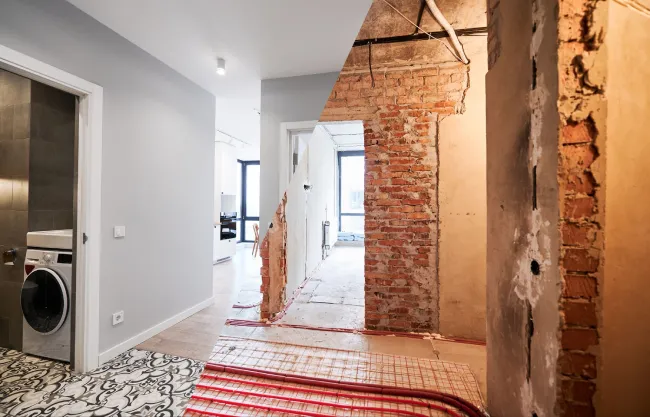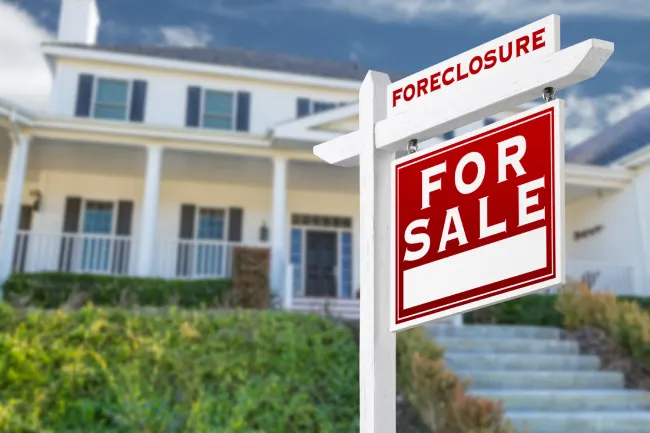Building a lucrative real estate portfolio requires ample time, access to capital and the right strategy. Many real estate investors are drawn to the fix-and-flip strategy to generate reasonably timely profits. However, this strategy requires an active commitment of time, energy and money. This commitment often extends for a year or longer in some cases. In addition, passive income isn’t created. For real estate investors focused on building passive income, BRRRR is an investing method to consider.
Understanding the BRRRR Method?
Before taking a deep look at the BRRRR method, a review of the traditional long-term investment strategy is useful. Investors need access to capital upfront for closing costs and the down payment. The initial investment directly affects profitability from day one. Because of this, the investor may feel incentivized to make a larger down payment. This affects how quickly the investor can add more properties to the portfolio.
In addition, the rental income covers the mortgage, operating expenses and perhaps a modest profit. Over time, the market will support a higher rental rate, and the property generates additional passive income. With each mortgage payment, equity slowly builds. Eventually, the investor can afford to invest in another property. As you can see, building a real estate portfolio is tedious. Both passive income and equity grow slowly.
How does the BRRRR method work? The BRRRR strategy enables you to pare down the process. It involves five steps: Buying, Rehabbing, Renting, Refinancing and Repeating. When you compare BRRRR to the traditional method of building a portfolio, you will see that the BRRRR method is generally faster and optimizes the use of equity. How exactly does BRR work?
The BRRRR Strategy
To fully take advantage of the benefits of BRRRR, the steps must be carefully followed. Each step serves a critical purpose that supports the following steps.
Buy the Right Property
Selecting the right piece of real estate is crucial. The ideal property for the traditional method is not suitable for BRRRR. For a traditional, long-term hold investment, the real estate should be in good shape. Using the BRRRR strategy, you want a run-down property or a property in need of major updating. It may also be a pre-foreclosure or foreclosure property.
Essentially, you are looking for a property with considerable upside potential. However, because the property will later be leased, it must have qualities that appeal to potential tenants. These qualities include being in a desirable location, having an excellent floor plan or something else.
Rehab the Property
During this BRRRR step, make the necessary repairs and upgrades to the distressed property. The goal is to make it move-in ready. The rehabbed property must be safe and structurally sound. In addition, the finishes and features should be appealing. After the rehab, the property will successfully support a market rental rate, and its value will be aligned with comparable properties.
The rehab budget and renovation costs must be carefully detailed upfront. Often, rehab properties conceal damage behind walls and under floors. Consult with a general contractor and property inspector upfront to create a realistic budget.
Rent It Out
Once the rehab work is done, the property is listed for lease. The rental rate directly impacts your ability to lease the property quickly and for top dollar. Do thorough market research before posting the listing online. Because a residential lease is typically between six and 18 months, the rent amount affects your bottom line for a lengthy period of time.
At the same time, finding a quality tenant at the desired rental rate is critical. The extra effort spent screening applicants can impact your ability to collect rents. It also affects how well-kept the property is.
If you want to take a hands-off approach with your investment’s daily operations, hire a property management company. The property manager will assist with screening applicants and setting a competitive rental rate. To truly make your investment passive, professional management is essential. However, the wrong management can be detrimental to your profit. Carefully vet a property management company upfront.
Refinance the Loan
Many investors use a mortgage to cover most of their initial investment. A fix-and-flip loan is a short-term loan that is specifically designed for this purpose. Because the property was distressed and then improved, you will be sitting on a sizable amount of equity. Pull the equity out with a cash out refinance mortgage.
The new mortgage payment directly impacts the long-term profitability of your investment. Compare options to find the best interest rate and terms available. Analyze the numbers thoroughly before finalizing the mortgage.
Repeat the Process
Now, you have an income-producing rental property in excellent condition. You have also recouped your initial investment in the property in a relatively short period of time. To continue building your portfolio of rental properties and build equity and income at a faster pace, repeat the process.
What Are the Pros and Cons of the BRRRR Strategy?
Many real estate investors have built massive portfolios using BRRRR. However, this method has both pros and cons to consider before deciding on an investment strategy.
Let’s start with the pros.
Build Wealth
This method uses leverage to cover a large portion of the initial investment. It also enables you to quickly build equity and tap into that equity. This equity as well as additional leverage are used to purchase the next property and so on. Ultimately, you can build wealth quickly using BRRRR.
Generate Passive Income
Each new rental property increases your portfolio’s passive income production. As your portfolio grows, the source of income is diversified across more sources. This enables you to more reliably maintain an income stream from your investments.
Optimize Equity
By selecting properties with the greatest upside potential, the equity available through a cash out refinance is optimized. When applying for a cash out refinance loan, this equity could play a role in qualifying for a lower interest rate. This establishes lower monthly payments and optimizes cash flow.
While these are powerful benefits, there are a few downsides to the BRRRR method to be aware of as well.
Requires Capital
To purchase your first BRRRR real estate investment, you do need some capital. This includes capital for the down payment, closing costs and renovations. Hard money loans are often used for this purpose. In some cases, hard money loans provide funds for renovations.
Find Suitable BRRRR Real Estate
The ideal property for this strategy must have upside potential. Specifically, the after-repair value ARV must be sufficient to pay off the original loan and cover renovation expenses. In addition, it must support a cash out refinance loan amount that allows the investor to tap into created equity.
Risk Potential Loss
There is a degree of speculation involved in the BRRRR method. For example, the ARV may not be as high as expected. The rehab costs may be higher than expected. In addition, you may not be able to find a qualified tenant who will pay the planned rental rate.
Make a Long-Term Commitment
Each property in your real estate portfolio represents a long-term commitment. Your attention to property maintenance and tenant management affect future profits. When you end that commitment by selling, your ability to sell and your profit are subject to market conditions at the time.
Discuss Your Investing Strategy with Us
At Macoy Capital, we are a hard money lender that provides creative financing solutions for real estate investors. Financing plays a significant role in using the BRRRR strategy. You need to understand your loan options while searching for the right property. Contact us today to discuss financing available for your needs.








